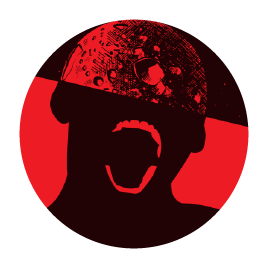The worst part of using a gaming laptop on Linux is that, despite the great work of open source developers and hobbyists, it’s still way too clunky to use a hybrid graphics setup imo. Once you want to use an interface that’s only connected to one GPU (such as HDMI) you’re left messing with switching utilities like optimus-manager which (while very useful!) are usually rarely updated and may not work on certain systems.
At least with a system like this, which is pretty similar to how much I paid for a 1650Ti-mobile (while being faster!) all the graphics are handled by a single driver, which simplifies most of the pain in using a laptop on Linux for anything graphically intensive.
Looking forward to seeing Framework becoming this affordable one day, because I’d much rather go with them over Lenovo, but at least for now I can use Lenovo which lets you refuse Windows and save £90 :)
You can remove the OS (-£90) and add more storage (+£50) and it will be better and cheaper.
Edit: Or you can also do a CPU upgrade to a Ryzen 7 and break even.
Upgrading the CPU also lets you upgrade to 32GB ram for a small fee. Considering the ram is soldered, it would be worthwhile.
Exactly why I like Lenovo. It’s rare for a new laptop to have the option to remove Windows, let alone save you some money for the lack of license.
But yes, if you get the 7840HS (just about offsets the windows license) you get a GPU that’s best in class for integrated graphics and easily beats some of the most popular dedicated alternatives the nvidia 1600 series.
Second the upgrading of storage. If you think you need 512GB, get 1TB. If you think you need 1TB, get 2TB (if possible). You always need more storage than you think you need.
You shouldn’t generalize your bad experience with NVIDIA’s proprietary driver to Mesa. Graphics device switching just works on Mesa, hence laptops with an AMD dGPU are great on Linux.
Typing this from a 2021 Asus ROG Strix G15 Advantage Edition
And how about hardware outputs ie. HDMI ports? My Nitro 5 (4600H + 1650ti-M) refuses to output to HDMI unless I manually set the dGPU to always-on rather than the usual distro default of PRIME offloading.
Here’s the update, I’ve got the USB-C/HDMI adapter today. Connected it to the port that connects directly to the dGPU and even during boot Plymouth was already outputting video to the TV. I also tested hot-plugging and it just works as expected.
Now for the problems, I ran benchmarks and the performance was as expected, but frame delivery didn’t look as good as when using the HDMI port on this device. It doesn’t show on the performance metrics, but looking at the screen, the frametimes looked off, stuttering. I’m still figuring out where the issue might be to report it to upstream. EDIT: For people reading this in the future, I’ve found the issue to be in GNOME’s compositor, Mutter: https://gitlab.gnome.org/GNOME/mutter/-/issues/3070#note_1865351
appreciate the update!
for what its worth, I have a hybrid setup and use; https://github.com/bayasdev/envycontrol
I’m confused by Lenovo’s naming these days. Before, “pad” used to denote the hybrid/tabletized devices with detachable touchscreens, and stuff like “note” and “book” tended to be laptops of varying size. Now it looks like “pad” is just laptops, or maybe it means the thinner ones?
Apple and Microsoft are probably the only companies doing relatively consistent naming of their laptops. trying to find my model of laptop online is an absolute nightmare
OOTL, why should i care about the 780m iGPU?




